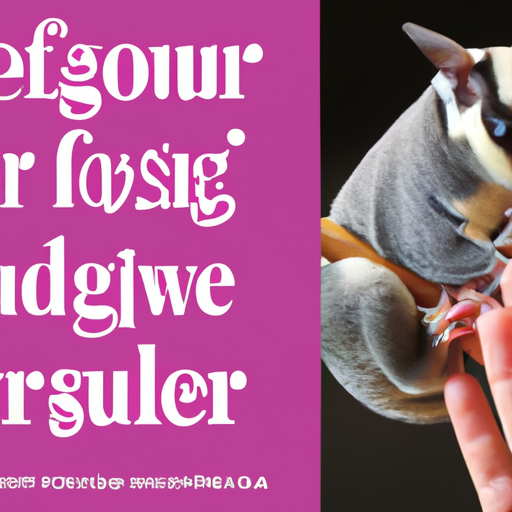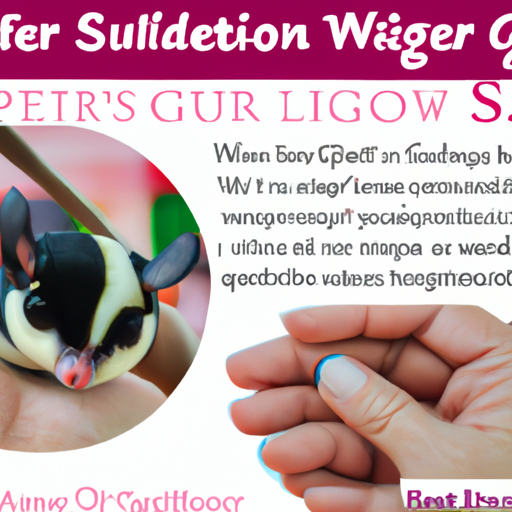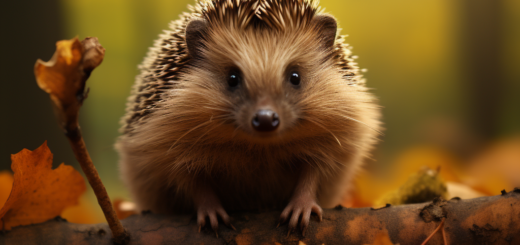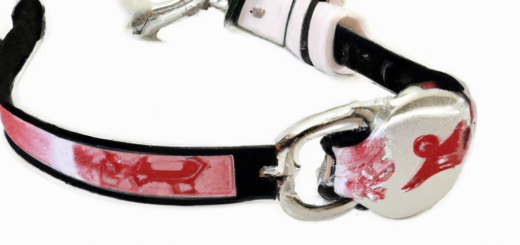Sugar Glider Bonding: Building Trust And Strengthening The Connection With Your Glider
In this article, you will discover valuable tips on how to build trust and strengthen the connection with your sugar glider. Whether you’re a new owner or have had your glider for a while, nurturing a strong bond is essential for a happy and fulfilling relationship. We will explore techniques such as providing a comfortable environment, spending quality time together, and understanding your glider’s body language. By implementing these strategies, you will pave the way for a deeper and more meaningful connection with your furry friend. So, let’s embark on this exciting journey of sugar glider bonding!
Understanding Sugar Gliders
Sugar gliders are small, arboreal marsupials that are native to Australia, New Guinea, and Indonesia. They are extraordinary creatures with unique physical characteristics that make them both adorable and fascinating.
Physical Characteristics
Sugar gliders have a distinctive appearance with their large, round eyes and fluffy, bushy tails. They are about the size of a squirrel, measuring between 5 to 12 inches long, with a tail that can grow up to 12 inches in length. They are covered in a soft and silky fur that can range in color from gray to brown. One of their most remarkable features is their patagium, a membrane of loose skin that extends from their wrists to their ankles, allowing them to glide through the air. This ability to glide helps them navigate their natural forest habitat with ease.
Habitat and Natural Behavior
In the wild, sugar gliders primarily inhabit the forest canopy, where they use their gliding ability to move between trees. They have a highly social nature and live in small family groups called colonies. Within the colony, they establish strong bonds and display cooperative behaviors, such as grooming each other and sharing food. Sugar gliders are nocturnal creatures, meaning they are most active during the night. During the day, they rest in tree hollows or other sheltered spots to avoid predators and conserve energy.
Why Bonding is Important
Bonding with your sugar glider is crucial for developing a strong and trusting relationship. By investing time and effort into the bonding process, you will establish a foundation of trust and security that will benefit both you and your glider.
Creating a Strong Foundation
Building a strong foundation with your sugar glider starts with understanding their needs and natural behaviors. By providing a safe and nurturing environment, you are setting the stage for a successful bonding experience. This includes creating a suitable habitat, providing a balanced diet, and engaging in regular interaction.
Establishing Trust and Security
Trust and security are vital components of bonding with your sugar glider. These little creatures rely on their colony members for safety and companionship, so by earning their trust, you become their source of security and comfort. With time and patience, your glider will learn to see you as a safe and dependable companion.

This image is property of images.unsplash.com.
Preparing Your Home
Before bringing your sugar glider home, it is essential to prepare your environment to ensure their safety and well-being. Taking the necessary precautions will create a suitable space for bonding and prevent any potential hazards.
Creating a Safe Environment
Sugar gliders are curious and agile creatures, so it is crucial to “glider-proof” your home. This means securing any potential escape routes, covering open electrical outlets, and removing toxic plants or substances that could harm your glider if ingested. Additionally, make sure to remove any items that may pose a choking hazard or have sharp edges.
Setting up a Suitable Cage
A suitable cage is essential for providing your sugar glider with a comfortable living space. It should be spacious enough to allow gliding, climbing, and provide room for toys and accessories. The cage should have multiple levels and branches for exploration, as well as a cozy sleeping nest. Make sure to line the cage with suitable bedding material, such as fleece or shredded paper, and provide fresh water and a balanced diet to keep your glider healthy and happy.
Bonding Techniques
Building a strong bond with your sugar glider takes time and patience. By using specific bonding techniques, you can help your glider feel comfortable and secure in your presence.
Start with Observation
When first introducing yourself to your glider, it is essential to start with observation. Allow your glider to become familiar with your presence without overwhelming them. Sit near the cage or enclosure and speak softly to them. You can also try offering a treat through the cage bars to establish a positive association.
Establishing a Routine
Sugar gliders are creatures of routine and thrive on predictability. By establishing a consistent schedule for feeding, playtime, and interaction, you can help your glider feel safe and secure. Consistency will also help your glider recognize and anticipate your presence, strengthening the bond between you.
Slow and Gradual Approach
Approaching your glider slowly and gradually will prevent overwhelming them or triggering any fear responses. Extend your hand towards them slowly, allowing them to become comfortable and approach you at their own pace. Avoid sudden movements or loud noises that might startle them.

This image is property of images.unsplash.com.
Building Trust through Scent
Sugar gliders have a strong sense of smell, and scent plays a crucial role in their communication and bonding. Utilizing scent swapping and bonding pouches can help strengthen the bond between you and your glider.
Scent Swapping
To promote bonding, you can engage in scent swapping activities. Start by rubbing a soft cloth or pouch on your body to capture your scent, then place it in your glider’s cage. Likewise, take a cloth or pouch with your glider’s scent and keep it close to you. This scent exchange helps familiarize your glider with your scent and vice versa, building trust and familiarity.
Using Bonding Pouches
Bonding pouches are small, fabric pouches that sugar gliders can crawl into and carry around with them. By using a bonding pouch, you can keep your glider close to you and provide them with a sense of security. Begin by offering treats in the pouch, allowing your glider to associate the pouch with positive experiences. Over time, your glider will feel comfortable and safe inside the pouch, strengthening the bond between you.
Developing Positive Associations
Positive associations are vital for creating a strong and trusting bond with your sugar glider. By incorporating reward-based training and offering favorite treats, you can reinforce positive behavior and build a deeper connection.
Reward-Based Training
Sugar gliders are intelligent and can be trained to perform various behaviors using positive reinforcement. Utilize treats or small pieces of their favorite fruits as rewards when they display desired behaviors. This not only strengthens the bond between you and your glider but also stimulates their mental and physical activity.
Offering Favorite Treats
Sharing food is an essential part of sugar glider bonding, as it mimics their natural behavior within a colony. Offering your glider their favorite treats, such as mealworms or fresh fruit, can help create positive associations and strengthen the bond between you. Be sure to provide a balanced diet to ensure your glider’s overall health and well-being.

This image is property of images.unsplash.com.
The Importance of Handling
Regular and proper handling is a vital part of bonding with your sugar glider. By following proper handling techniques and providing regular physical contact, you can establish a deeper connection and strengthen your bond.
Proper Handling Techniques
When handling your glider, it is crucial to use gentle and confident movements. Support their body by cradling them in your hands, with one hand supporting their chest and the other supporting their hindquarters. Avoid squeezing or grasping too tightly, as this can cause discomfort or distress. Always be aware of your glider’s mood and cues, respecting their boundaries, and never force them to interact.
Regular Physical Contact
Sugar gliders thrive on physical contact, as it mimics the grooming and closeness they experience within their colony. Spending time with your glider by carrying them in a bonding pouch or allowing them to perch on your shoulder will foster a deeper bond. Regular physical contact will not only strengthen your connection but also provide comfort and security for your glider.
Socialization with Other Gliders
Sugar gliders are highly social animals and often thrive in the presence of other gliders. Introducing multiple gliders and providing supervised playtime can enrich their lives and strengthen their social bonds.
Introducing Multiple Gliders
If you have a single glider, consider introducing them to another glider to enhance their socialization. However, introductions should be done slowly and carefully to prevent aggression or territorial behaviors. Always monitor their interactions and provide separate spaces within the cage for each glider to ensure they have their own territories.
Supervised Playtime
Organizing supervised playtime for your gliders can be a fun and enriching experience. Providing a safe, glider-proofed area where they can explore and play together allows them to engage in social behaviors and strengthen their bond. However, it is crucial to remain present to ensure that playtime remains safe and friendly.

Communication and Vocalizations
Understanding your sugar glider’s vocalizations and interpreting their body language is crucial for effective communication and further strengthening your bond.
Understanding Common Vocalizations
Sugar gliders communicate through an array of vocalizations, including chirping, barking, and hissing. Each vocalization carries a unique message, such as expressing contentment, alarm, or warning. By paying attention to these vocalizations, you can better understand your glider’s emotional state and respond accordingly.
Interpreting Body Language
Alongside vocalizations, body language plays a significant role in sugar glider communication. Observe your glider’s posture, tail movements, ear positions, and facial expressions to gain insight into their feelings and needs. Being able to interpret their body language will help you build a deeper understanding and respond appropriately to their cues.
Troubleshooting Common Issues
Bonding with your sugar glider may not always be smooth sailing, and you may encounter some common issues along the way. By understanding and addressing these issues, you can overcome challenges and continue strengthening your bond.
Biting and Nipping
Sugar gliders may nip or bite if they feel threatened or fearful. It is essential to respect their boundaries and avoid actions or situations that may cause them stress. If biting becomes a persistent problem, consult with a veterinarian or an experienced sugar glider owner for guidance and further assistance.
Fear and Aggression
Some sugar gliders may display fear or aggression due to past experiences or lack of socialization. Patience, consistency, and positive reinforcement are key in helping them overcome these behaviors. Consult with a veterinarian or an experienced sugar glider owner for tips and techniques specific to your glider’s needs.
Building trust and strengthening the connection with your sugar glider takes time, patience, and understanding. By following the bonding techniques, taking necessary precautions, and providing a nurturing environment, you can create a beautiful and lifelong relationship with your glider. Remember, every glider is unique, so tailor your approach to suit their individual needs and personality. Enjoy the journey of bonding with your sugar glider and cherish the special moments you share together.







